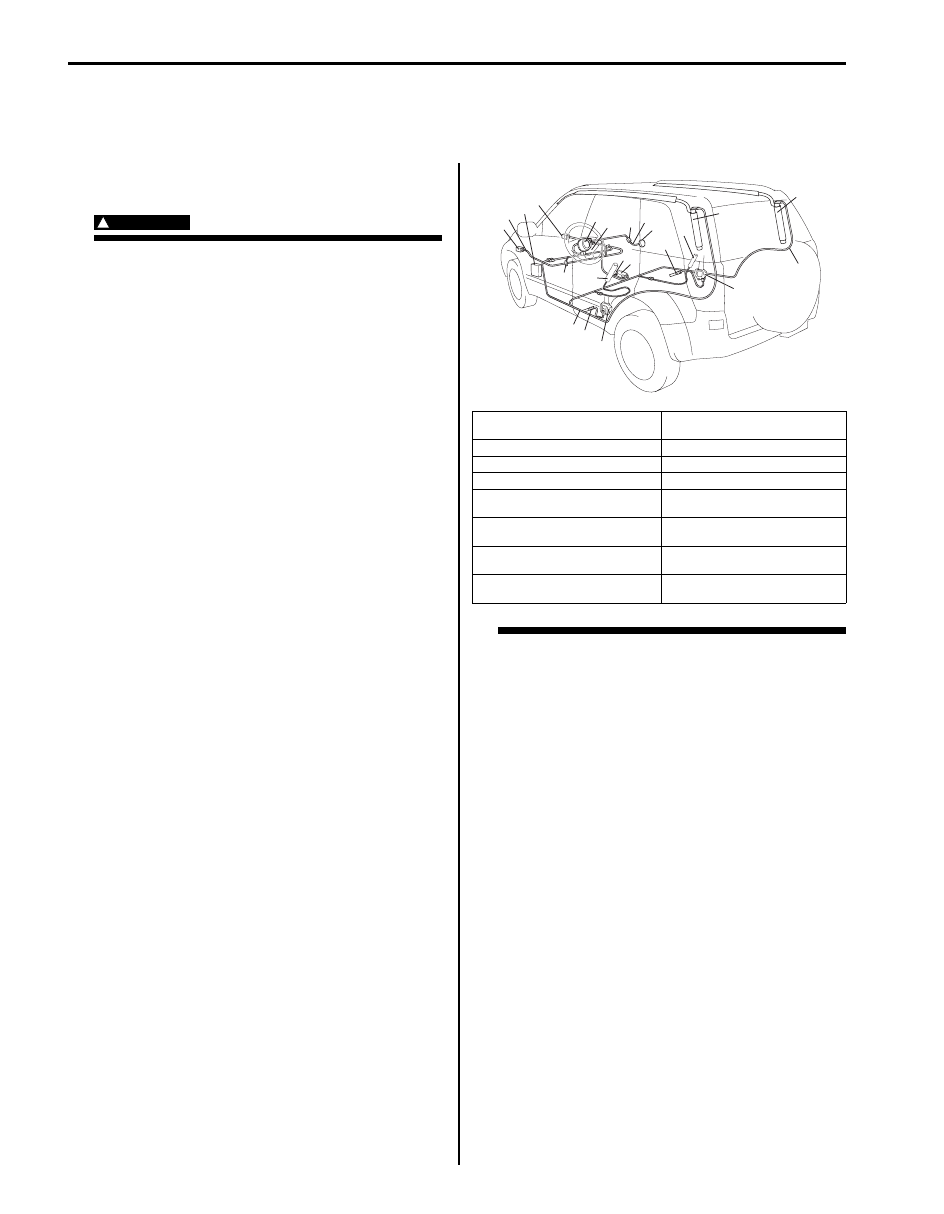Index Suzuki Suzuki Grand Vitara JB416 / JB420- service repair manual
|
|
|

00-1 Precautions: Precautions Precautions Precautions Precautions for Vehicles Equipped with a S5JB0A0000001 WARNING !
• The configuration of air bag system parts are as shown in the figure. When it is • If the air bag system and another vehicle system both need repair, SUZUKI • Do not modify the steering wheel, dashboard, or any other air bag system • If the vehicle will be exposed to temperatures over 93 °C (200 °F) (for example, during a paint baking process),
1. Passenger air bag (inflator) module 9. Ground for air bag system 2. Driver air bag (inflator) module 10. SDM 3. Contact coil assembly 11. Side-sensor (if equipped) 4. Air bag harness in main harness 12. Seat belt pretensioner 5. Forward-sensor 13. Side curtain-air bag (inflator) module (if equipped) 6. “A/B” fuse in junction block assembly 14. Air bag harness in instrument panel harness 7. Air bag harness in floor harness 15. “AIR BAG” monitor coupler (if equipped) 8. Side-air bag (inflator) module (if equipped) 16. Passenger air bag harness 5 4 6 5 15 3 2 14 16 1 8 910 11 8 13 7 11 12 12 7 13 I5JB0A000003-02 |